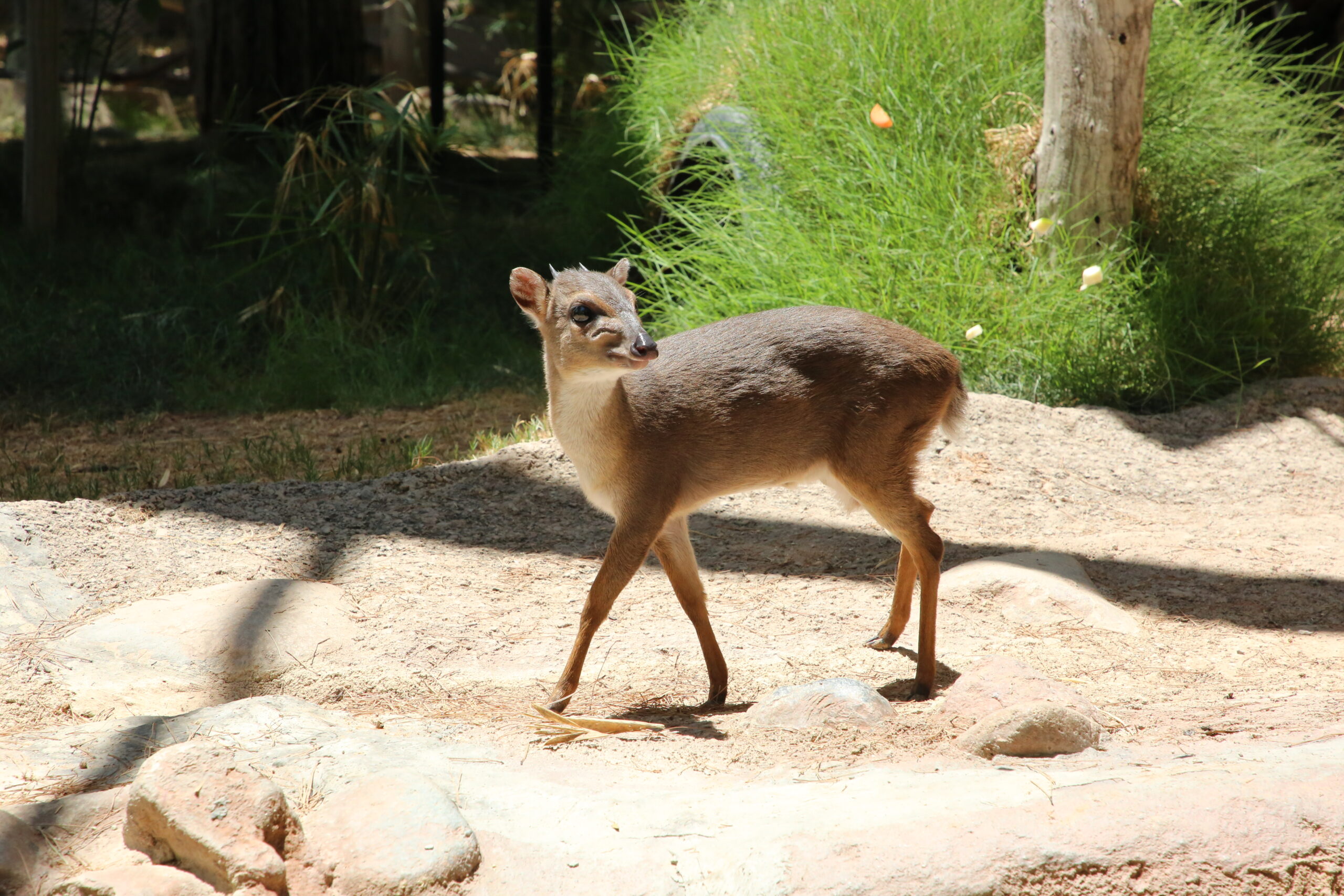Summary of Reid Park Zoo Welcomes Pair of Blue Duikers:
Reid Park Zoo has welcomed a pair of male and female blue duikers, a small antelope species native to Africa. The duikers, Marigold and Viazi, arrived as part of a breeding program and are the first of their species at the zoo. They have been bonding well since their arrival and are becoming close. The duikers are currently sharing a habitat with the zoo’s ring-tailed lemurs. While not classified as threatened or endangered, the duiker population is affected by hunting and habitat loss. Guests can spot the duikers in the mornings from 8 to 10:30 a.m.
Summary:
1. Reid Park Zoo has welcomed a pair of blue duikers, a small antelope native to Africa.
2. The blue duikers are the first of their species at the zoo and are part of a breeding recommendation.
3. The duikers, named Marigold and Viazi, have been bonding well since their arrival.
4. Duikers are known for their small size, reaching only a foot tall when fully grown.
5. Blue duikers are not currently threatened or endangered, but their population is affected by overhunting and habitat loss.
The Reid Park Zoo in Tucson, Arizona, recently introduced two adorable additions to its animal family. Meet Marigold and Viazi, the blue duikers! These charming creatures, native to the forests of central, western, and southern Africa, are the first of their species at the zoo, and their arrival is part of a breeding recommendation from their Species Survival Plan.
Adam Ramsey, the Zoo Animal Care Manager, expressed his excitement about having blue duikers at Reid Park Zoo. He believes these small, spritely antelopes have a unique story. Marigold, the larger of the two, is just 10 months old and hails from the Maryland Zoo. Viazi, the smaller male, is 2 years old and comes from the San Antonio Zoo. Since their arrival, they have bonded well and have formed a close relationship.
The male duiker was initially shy, but with the help of the animal care team, he is slowly acclimating to his new surroundings. Ramsey finds great joy in observing their adorable little faces and knowing they represent essential conservation work in sustaining their species.
So, what makes duikers so fascinating? Well, let’s start with their name. The word “duiker” means “dive” in the Afrikaans language. This name is derived from their inclination to dive into bushes to evade predators. Despite their small size, fully grown duikers only reach about a foot tall and weigh between seven to ten pounds. These tiny antelopes spend most of their day foraging for fruits and are even known to scavenge food dropped from birds and primates they follow. They have a unique diet so rich in moisture that they can survive without water, making them one of the few species capable of such an adaptation.
While blue duikers are not currently classified as threatened or endangered, their population is still affected by overhunting and loss of habitat. By introducing them to the Reid Park Zoo, they become ambassadors for their species, helping to raise awareness about the threats they face in the wild.
Guests of the zoo can now spot Marigold and Viazi in the habitat they share with the ring-tailed lemurs. However, as the duikers adjust to their new environment, they may occasionally be behind the scenes and invisible to visitors. The best time to catch a glimpse of them is in the mornings, from 8 to 10:30 a.m.
The arrival of Marigold and Viazi at the Reid Park Zoo is an exciting event for visitors and a significant step in conservation efforts. By showcasing these unique and fascinating creatures, the zoo hopes to inspire visitors to take action in protecting the natural habitats of all wildlife species. The story of the blue duikers serves as a reminder that every small act can make a difference in preserving the diversity and beauty of our planet.
Next time you visit the Reid Park Zoo, watch for Marigold and Viazi, the charming and captivating blue duikers. They may be small, but they carry an important message about the importance of conservation and the remarkable adaptability of nature’s creatures.


